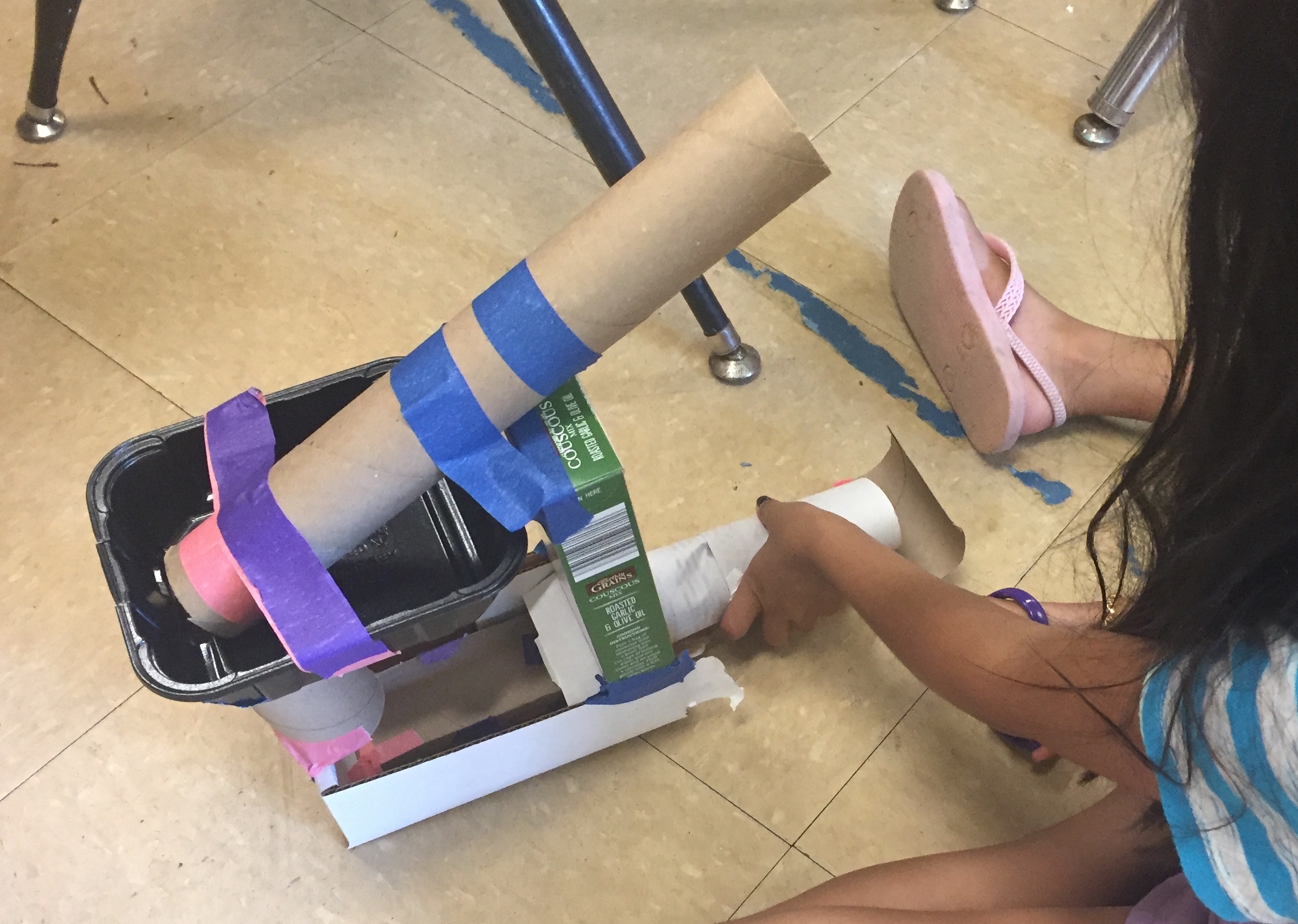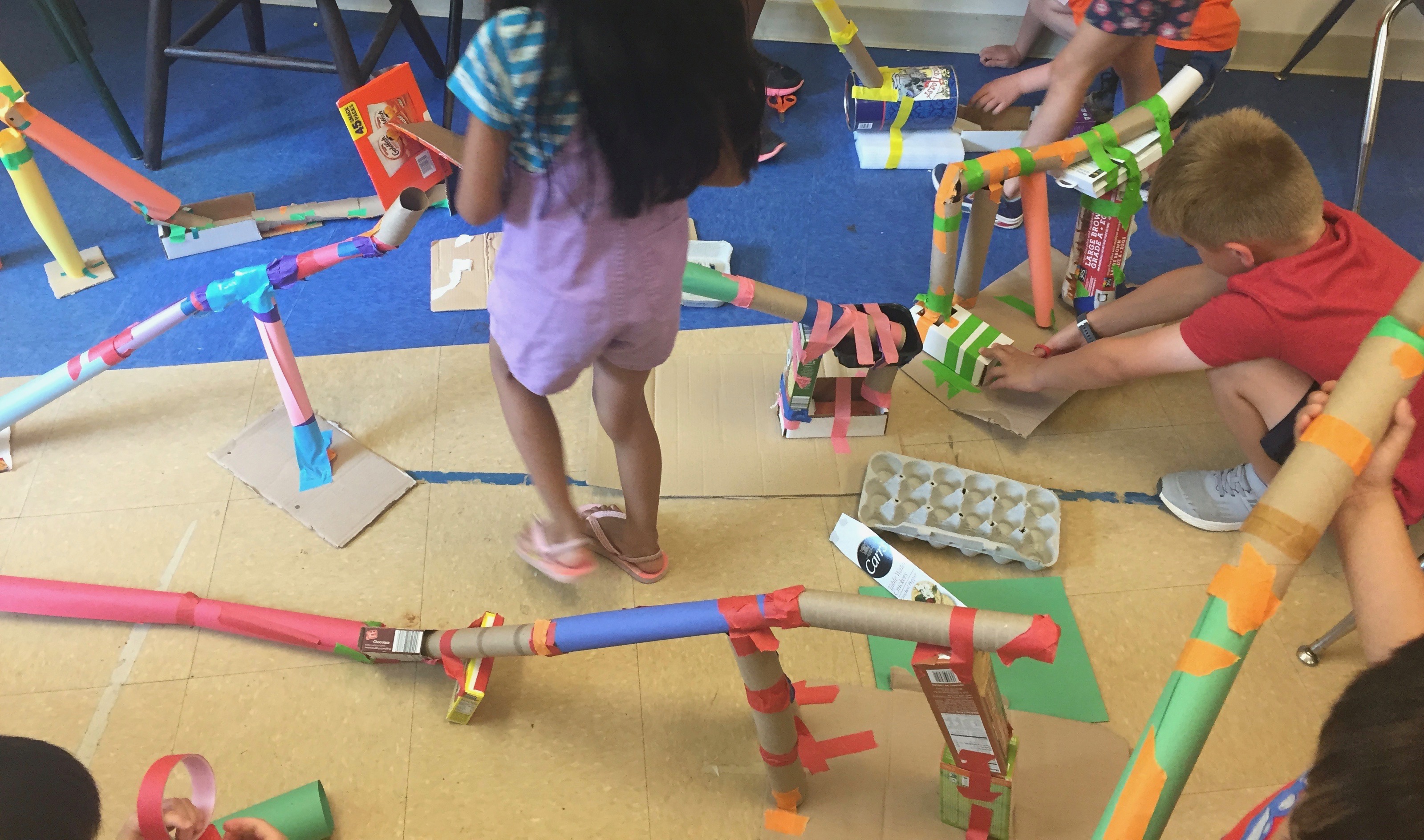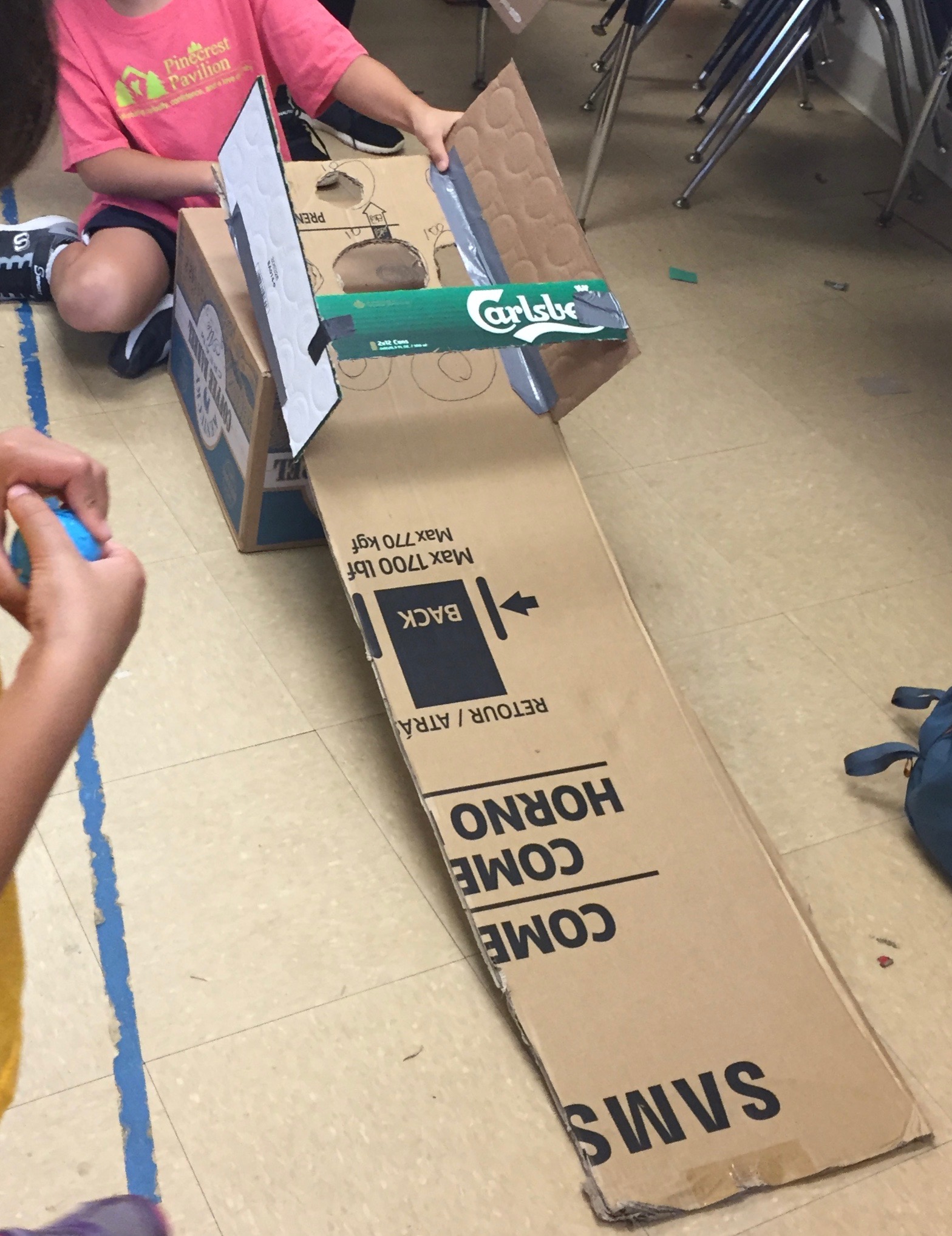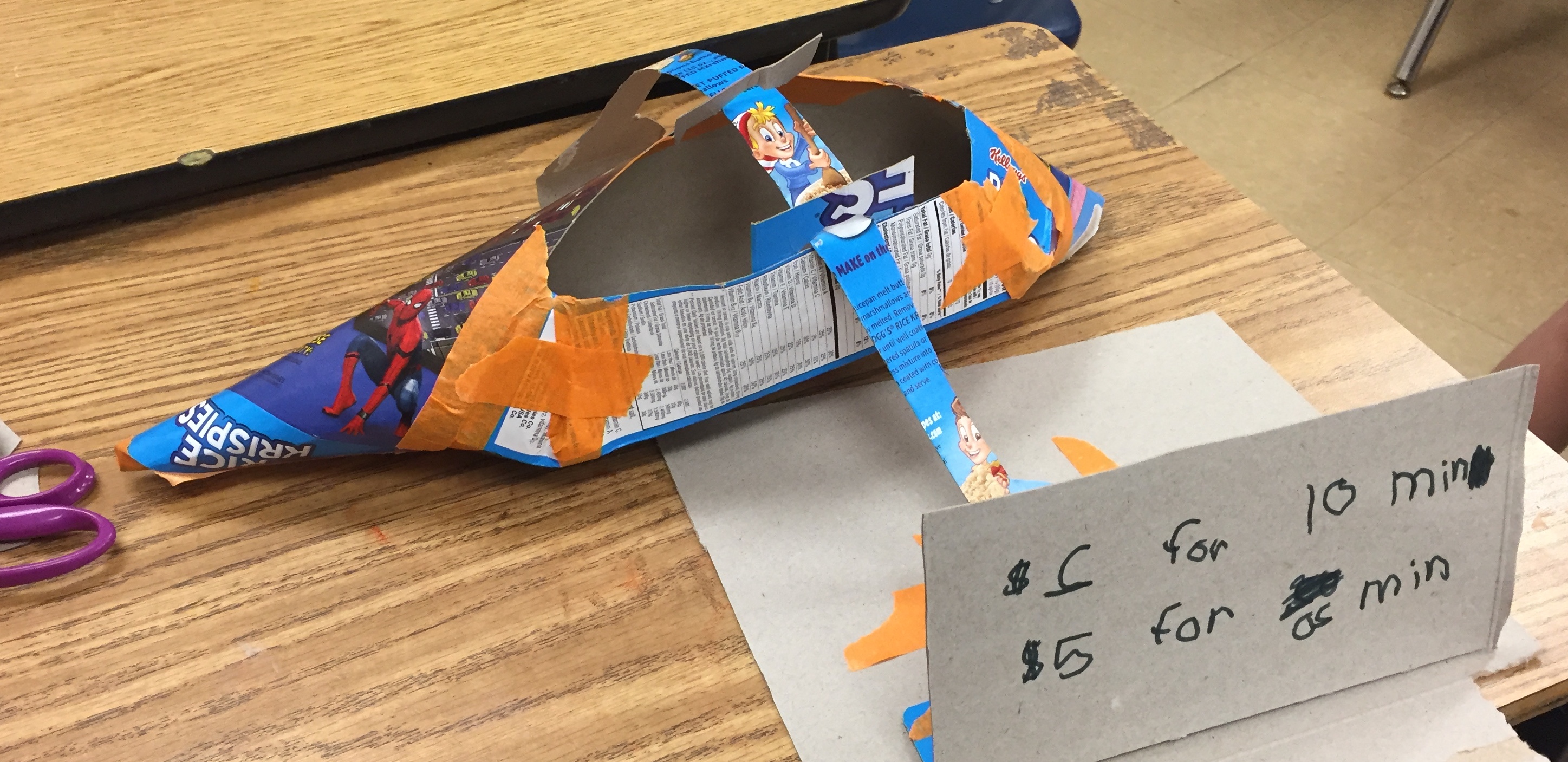Fostering children’s capacity to design and construct
By Peggy Ashbrook
Posted on 2019-10-15
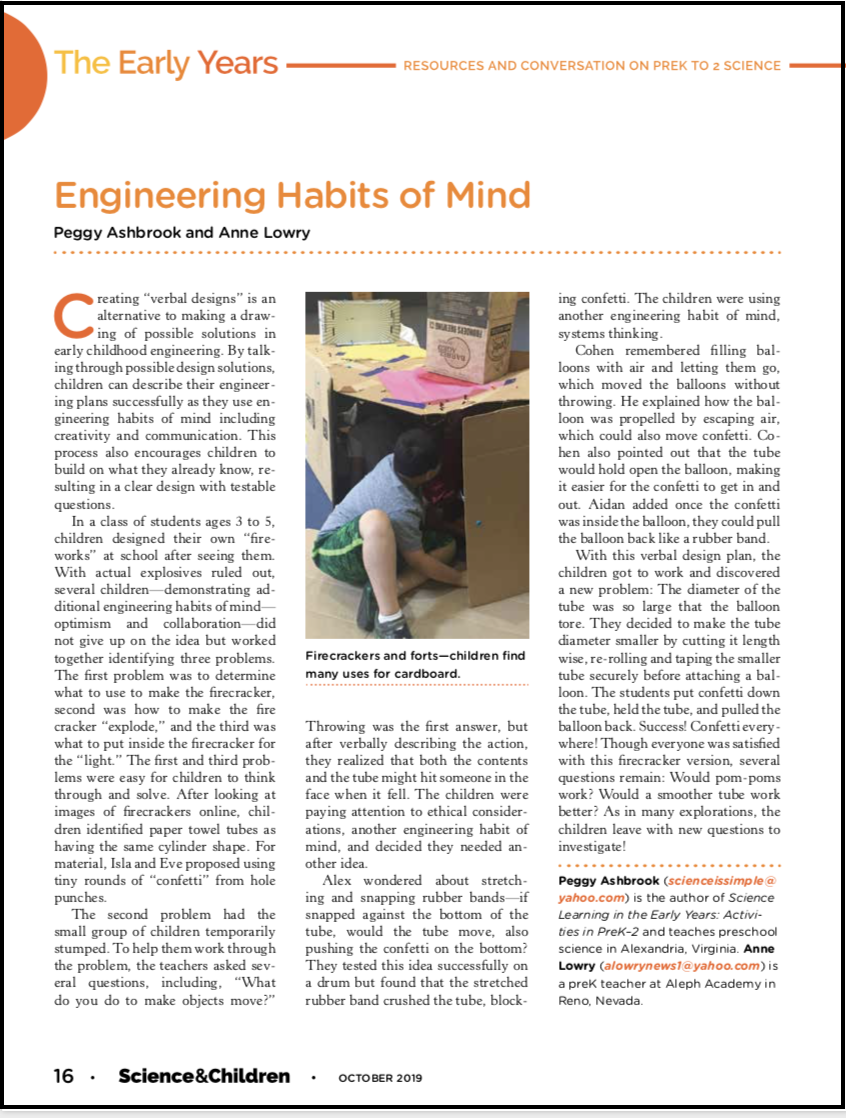
In the October 2019 Early Years column in Science and Children, Anne Lowry, a preK teacher at Aleph Academy in Reno, Nevada, and I wrote about problem-solving experiences that took place in our classrooms. Engineering design opportunities in early childhood may come about by following children’s interests and also when adults provide both materials and challenges. “Engineering is a systematic and often iterative approach to designing objects, processes, and systems to meet human needs and wants” (NRC pg 202). The processes of engineering include testing and revisions, and using engineering habits of mind (Counsell 2015).
Fireworks!?
In Anne’s a mixed-age classroom of 3-to-5 year olds, not all children are able to draw possible solutions to engineering problems because they may be still developing the necessary fine motor skills. However, by creating verbal designs, children can describe their design quite successfully. In the process of creating verbal designs, the children build on what they already know, individually and sometimes collectively, if in groups. The result can be a clear design with concrete testing questions.
Educators who can be open to children’s loftiest ideas—even those that seem impossible at first—honor children’s capabilities and thinking. Consider how you might be able to say, “Yes, and…” and help children begin problem solving by asking open-ended questions. Make firecrackers at school!? The children wanted to wanted to build their own fireworks and although the teachers ruled out the use of explosives, several children did not give up on the idea of fireworks.
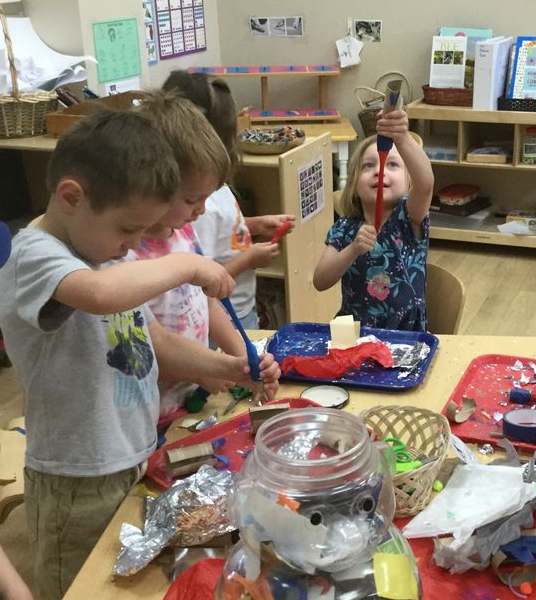
They worked together and identified questions about the design: 1.) What materials to use, 2.) How to make the fire cracker “explode,” and 3.) What to use to make it light up. Images of firecrackers suggested using material with a cylindrical shape—paper towel tubes. Anne asked prompting questions, including “What do you do to make objects move?” The children discussed and tested several methods before including a balloon into their design.
Two materials were proposed for the “light.” Isla and Eve proposed using tiny rounds collected when using hole punches (“confetti”), and Cohen wanted to try miniature pom poms. The children decided this was a testable question and gathered both materials.
Throughout their process the children used engineering habits of mind: systems thinking, creativity, optimism collaboration, communication, and attention to ethical considerations (the impact of engineering on people and the environment) (Counsell 2015). The success of their fireworks was confirmation that fostering children’s capacity to design and construct their designs helps them develop critical thinking skills and engineering habits of mind.
o—————————————o
Engineering Design with Cardboard
Teaching a summer camp class at the Pinecrest Pavilion Summer Camp on using cardboard in construction of designed structures provided an opportunity for me to see how the developmental age and prior experience of students directs the choice of projects and tools. Kindergarten to grade 2 children were enrolled in the morning session and the afternoon session was 3rd-5th.
Designing and building a marble run was our first project— re-using materials such as cardboard tubes and boxes, construction paper, and egg cartons, with tape. I provided some precut pieces of tape for the younger group and set up “tape stations” with scissors. The older group tended to take the rolls of tape to their table where it disappeared under their materials! The younger children built shorter structures. Seeking to make long ramps, the older children hastily rolled construction paper into long, structurally weak tubes.
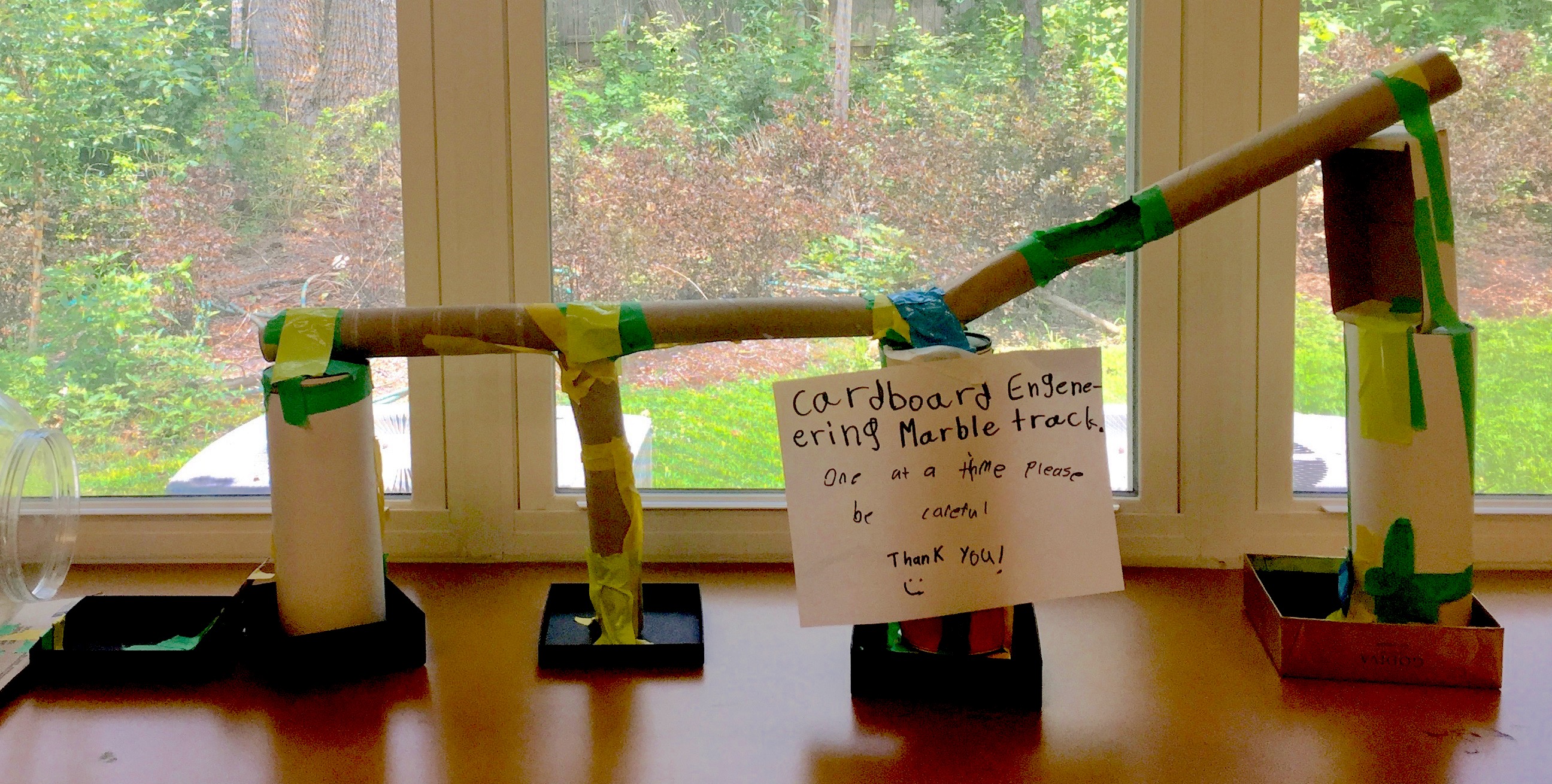
There was just as much difference in skill sets within the age groups as there was between them. Some children needed to hear others’ ideas before they could settle on a plan and get to work. Some were focused on completion and didn’t spend much time making a stable structure or creating a clear pathway for the marbles. Others worked so long on perfecting one aspect of their marble run that they ran out of time that day to make the rest of what they envisioned.
To become proficient at making well-formed objects of any kind (that meet their own expectations), children need more time than five half-days to mess about with materials, design, build, test, and re-design no matter what material is involved, but especially if they haven’t previously used the material. That very important open-exploration period strengthens children’s experience with the properties of materials and ability to imagine and design. Developing this knowledge also involves developing fine motor skills, patience, and spatial awareness, and is a lot of fun!

With just five half days to work together I decided that the Kindergarten-2nd graders would only use scissors to cut cardboard but would offer the 3rd-5th graders Klever Kutters, a safer alternative to a typical box cutter. I gave them a safety lesson on holding the cardboard with one hand while pulling the cutter through the it with the other—away from the holding hand.

The children mostly used scissors instead of the cutters. They preferred the less-sharp familiar tool. Initially I thought younger children would only use cereal box type cardboard, keeping the corrugated cardboard for older children. All ages impressed me with their willingness to work hard to shape corrugated cardboard.
The project of making “something” using cardboard gave children an open-ended challenge. Miniature stage scenes, cozy kitty boxes, arcade games, a model kayak, figure with movable limbs, and a fort were structures designed and built, but not perfected over the week.
On the fourth day I challenged the older children to design and build for another person. Each child wrote a note describing and/or drew a picture of an object or structure they would like someone else to build for them. The papers went into a bowl and then each child drew one out to work on. This is when children’s communication and attention to ethical considerations were evident. They had to interpret the notes to meet the needs of their “clients.”
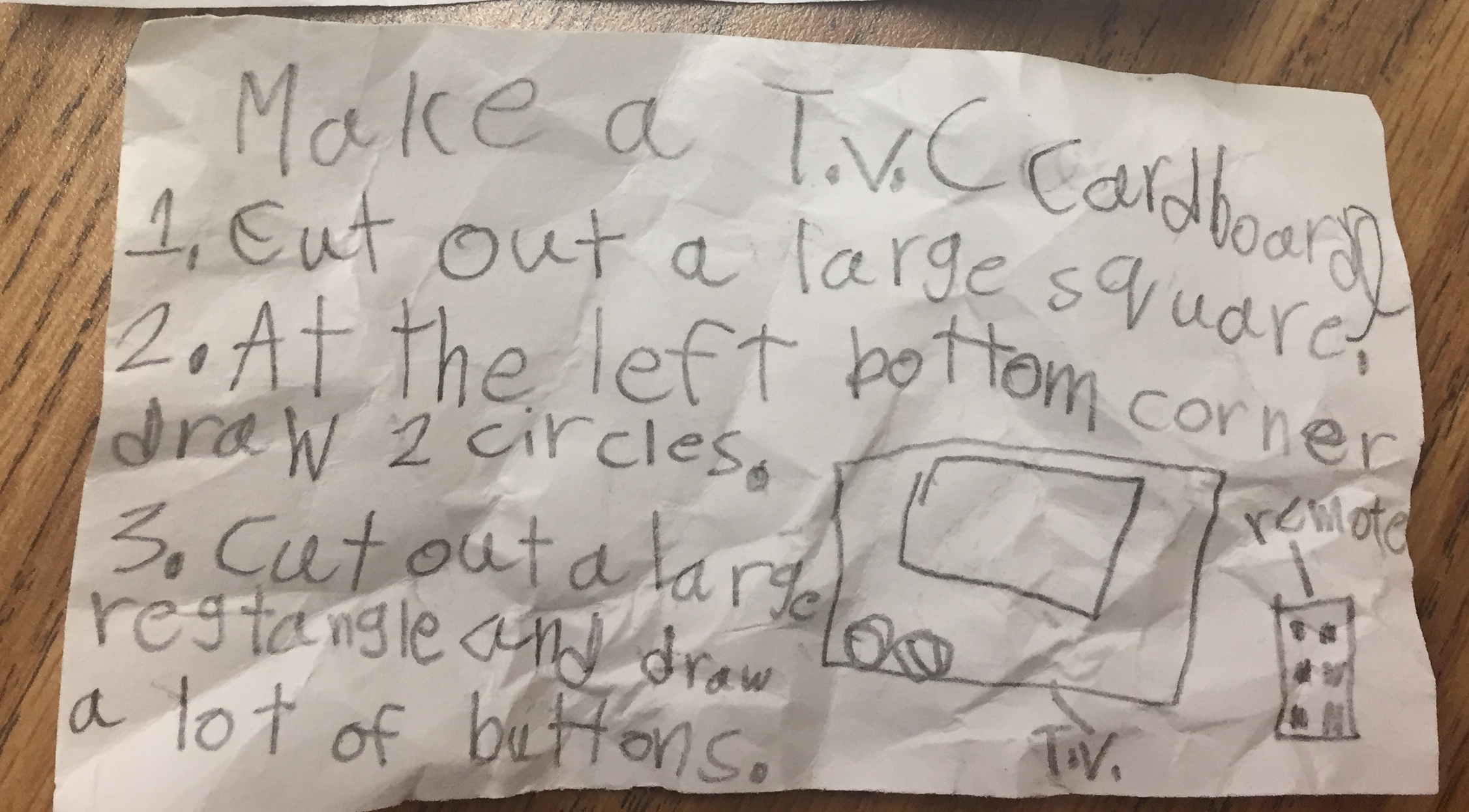
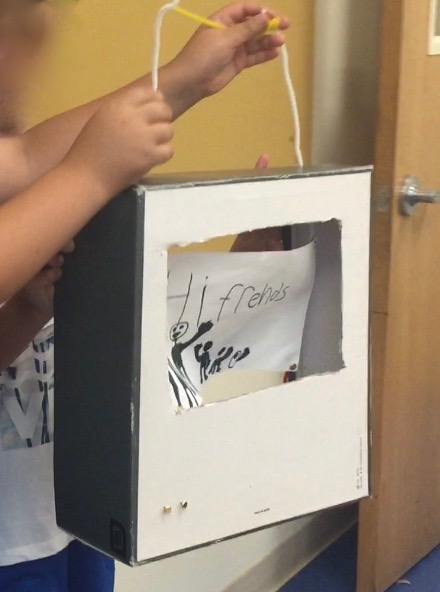
One child’s request detailed a television with remote. The engineer interpreted the design to include a moveable image to appear when the TV was “turned on.” In presenting the requested designed object to the clients the engineers demonstrated the features and discussed how the notes guided their design decisions. The children accepting the designed objects impressed me with their gracious appreciation for the work of their peers.
A classroom center for design using cardboard would provide opportunities for children to continue working on their ideas and solving problems through re-design during the school year. What do your children create with cardboard?
Engineering Habits of Mind. From STEM Learning with Young Children: Inquiry Teaching with Ramps and Pathways by S. Counsell, L. Escalada, R. Geiken, M. Sander, J.Uhlenberg, B. Van Meeteren, S.Yoshizawa, B. Zan. 2015. New York: Teachers College Press.
National Research Council (NRC). 2012. A Framework for K-12 Science Education: Practices, Crosscutting Concepts, and Core Ideas. Washington, DC: The National Academies Press. https://doi.org/10.17226/13165
Disclaimer: The views expressed in this blog post are those of the author(s) and do not necessarily reflect the official position of the National Science Teaching Association (NSTA).



